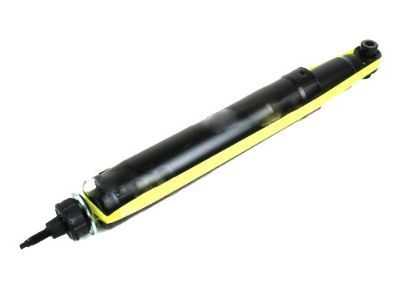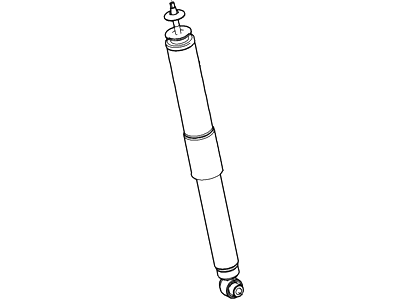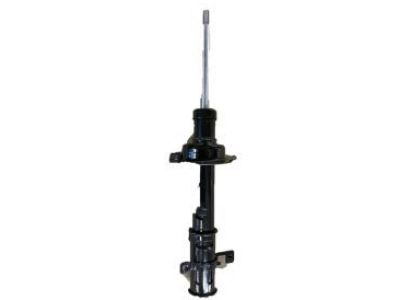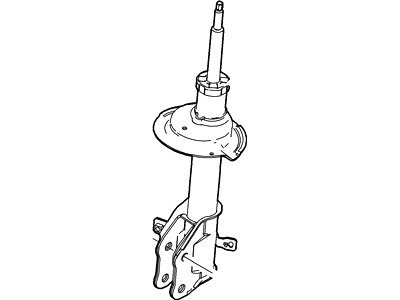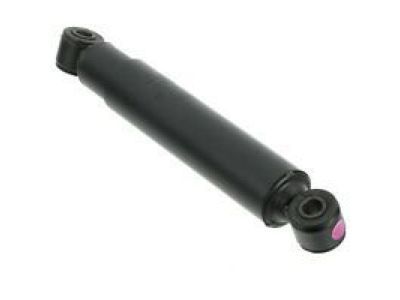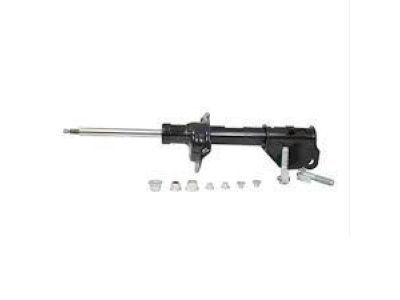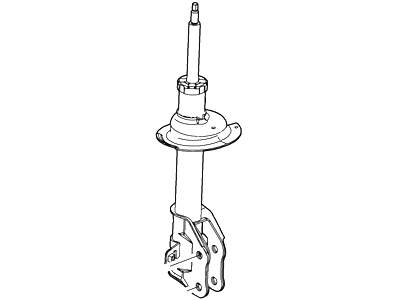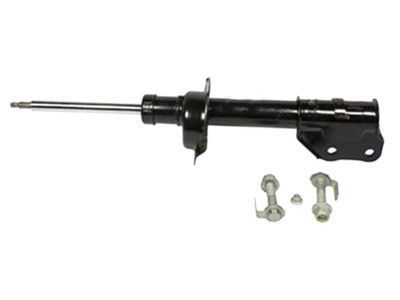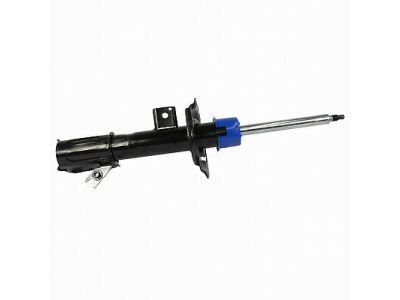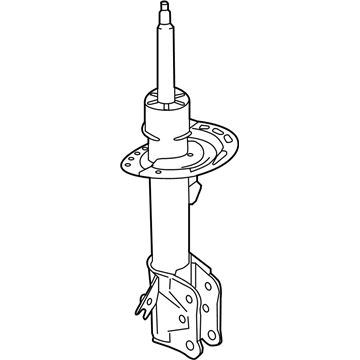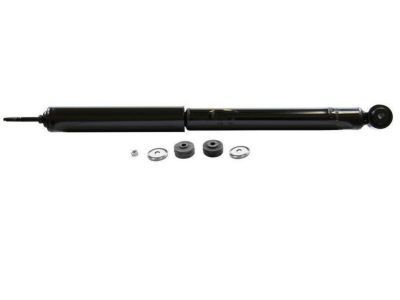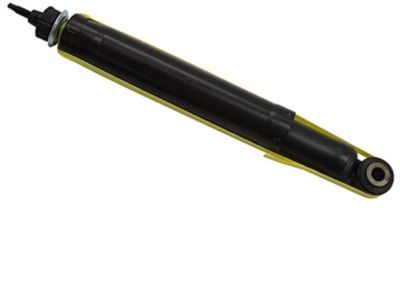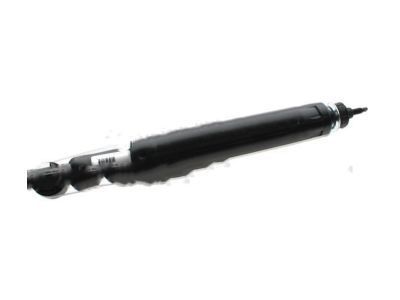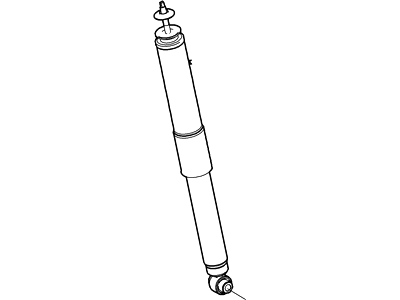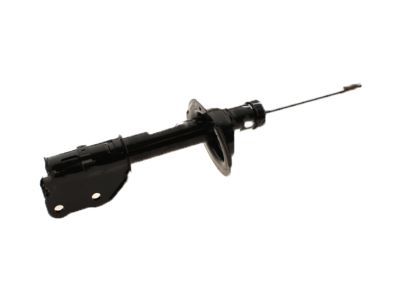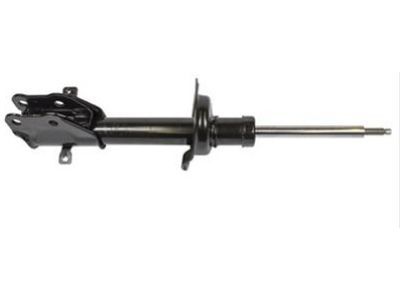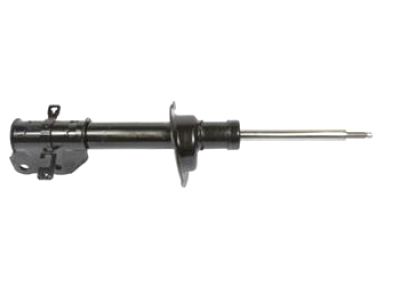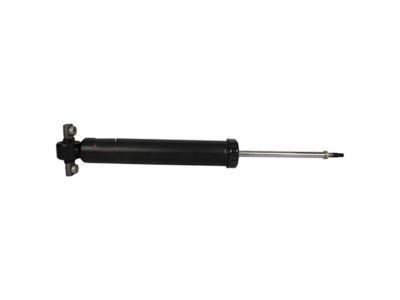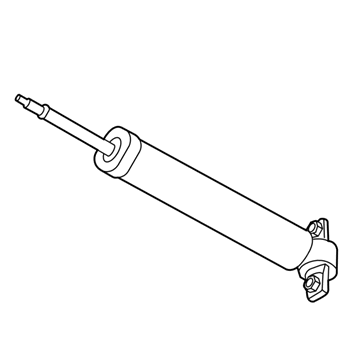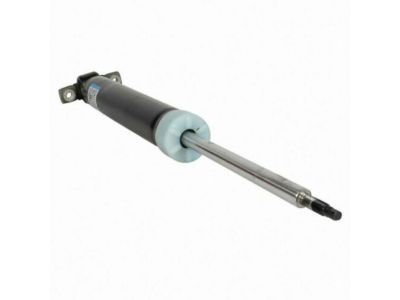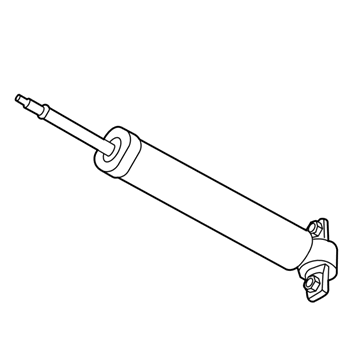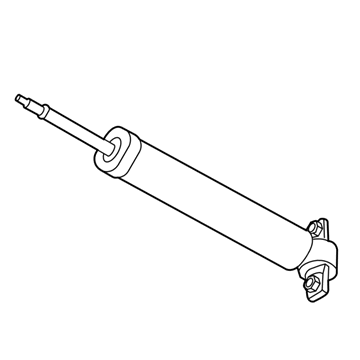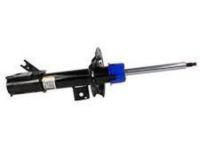

My Garage
My Account
Cart
Genuine Ford Edge Shock Absorber
Suspension Shock Absorber- Select Vehicle by Model
- Select Vehicle by VIN
Select Vehicle by Model
orMake
Model
Year
Select Vehicle by VIN
For the most accurate results, select vehicle by your VIN (Vehicle Identification Number).
65 Shock Absorbers found
Ford Edge Kit - Shock Absorber
Part Number: 8T4Z-18125-A$68.37 MSRP: $116.73You Save: $48.36 (42%)Ships in 1-2 Business DaysFord Edge Shock Absorber Assembly - Front
Part Number: BT4Z-18124-EC$119.33 MSRP: $201.82You Save: $82.49 (41%)Ships in 1-2 Business DaysFord Edge Kit - Shock Absorber
Part Number: 8T4Z-18125-B$69.21 MSRP: $116.73You Save: $47.52 (41%)Ships in 1-2 Business DaysFord Edge Kit - Shock Absorber
Part Number: 7T4Z-18124-BB$104.31 MSRP: $142.53You Save: $38.22 (27%)Ford Edge Kit - Shock Absorber
Part Number: 8T4Z-18124-DB$113.19 MSRP: $190.91You Save: $77.72 (41%)Ford Edge Front Shock Absorber Assembly
Part Number: K2GZ-18124-D$164.16 MSRP: $261.82You Save: $97.66 (38%)Ships in 1-3 Business DaysFord Edge Shock Absorber Assembly
Part Number: CT4Z-18125-A$69.19 MSRP: $114.36You Save: $45.17 (40%)Ships in 1 Business DayFord Edge Shock Absorber Assembly
Part Number: BT4Z-18124-D$111.10 MSRP: $183.64You Save: $72.54 (40%)Ships in 1-2 Business DaysFord Edge Shock Absorber Assembly - Front
Part Number: BT4Z-18124-C$119.33 MSRP: $201.82You Save: $82.49 (41%)Ships in 1-2 Business DaysFord Edge Shock Absorber Assembly
Part Number: J2GZ-18125-C$71.50 MSRP: $118.18You Save: $46.68 (40%)Ships in 1-2 Business DaysFord Edge Shock Absorber Assembly
Part Number: F2GZ-18125-P$69.52 MSRP: $114.91You Save: $45.39 (40%)Ships in 1-2 Business DaysFord Edge Shock Absorber Assembly
Part Number: K2GZ-18125-X$77.37 MSRP: $109.82You Save: $32.45 (30%)Ships in 1 Business DayFord Edge Shock Absorber Assembly
Part Number: K2GZ-18125-AA$60.93 MSRP: $111.45You Save: $50.52 (46%)Ships in 1-3 Business DaysFord Edge Shock Absorber Assembly
Part Number: K2GZ-18125-Z$117.50 MSRP: $198.18You Save: $80.68 (41%)Ships in 1-3 Business DaysFord Edge Shock Absorber Assembly
Part Number: K2GZ-18124-J$159.60 MSRP: $254.55You Save: $94.95 (38%)Ships in 1-3 Business DaysFord Edge SHOCK ABSORBER ASY
Part Number: K2GZ-18124-AP$159.60 MSRP: $254.55You Save: $94.95 (38%)Ships in 1-3 Business DaysFord Edge Shock Absorber Assy - Front
Part Number: 9T4Z-18124-A$119.33 MSRP: $201.82You Save: $82.49 (41%)Ships in 1-2 Business DaysFord Edge Shock Absorber Assembly
Part Number: F2GZ-18125-N$69.52 MSRP: $114.91You Save: $45.39 (40%)Ships in 1-2 Business Days
| Page 1 of 4 |Next >
1-20 of 65 Results
Ford Edge Shock Absorber
The Shock Absorber found in Ford Edge automobiles is an important part of the suspended system since in collaboration with the struts; it offers support and stability. This conversion of several kinetic energies to heat coming from the interaction of the car and the ground is effectively handled by the Shock Absorber thus improving the quality of the ride and handling. In the past years, ford has used shock absorbers that include twin tube and newly improved mono tube, where each of the consists of different ways of regulating the hydraulic fluid and improving its capability as per the driving styles and conditions. Subsequently, special types of designs as PSD and ASD go further in making the Shock Absorber to control responses to each drive structure and Semi Active & Active Suspensions by using Electrorheological or Magnetorheological fluid further behind the adaptive nature of comfort and control.
We provide a wide range of Ford Edge Shock Absorber at the best prices possible. If you need Ford Edge Shock Absorber, you can shop with confidence on our website. All our OEM parts come with a manufacturer's warranty and are delivered to your door step with a fast delivery service.
Ford Edge Shock Absorber Parts Questions & Experts Answers
- Q: How to replace the front suspension shock absorber and coil springs on Ford Edge?A:Replace the shock absorbers if they are faulty, as they cannot be serviced; however, the springs and related components can. Remove and install parts from both sides of an automobile to maintain equilibrium between the two sides. After removal, clean without scratching the spring protective coating. Use equipment for compressing coil springs and releasing the tension. Remove the nut holding the shock absorber piston rod plus unfix the upper mount, spring, boot, bump stop, and lower spring seat. Inspect shock for leakage, check piston rod for pitting, and examine shock body for damage. The test for smooth continuous resistance in the working operation of a shock should be replaced if it is worn out, damaged, or unevenly works. To re-assemble, place on top of shaft/damper part lower seat stopper rubber-dampener seal dust boot (if applicable)-rubber isolation mountPut them in sequence: lower spring seat/bumper overshoes/dust boots/springs/ upper mounts. Align the arrow according to the notch. Finally, detach the car's spring coil pressure and reinstall the assembly.
- Q: How do you check and maintain the CV boots and Shock Absorber on a Ford Edge?A:When carrying out a shock absorber check, ensure that the car is parked on a smooth ground with its engine switched off and parking brakes kept in place while checking tire pressures. Press down at each quarter of the vehicle noting its body movement in anticipation for straightening after one or two rebounds; continuous bouncing back or unequal positions might mean eroded shock absorbers. Even though if considerable leakage is present we should replace them, they can be retained as long as there are no leaks when performing this test on the rest of the corners and examining for shocks' fluid leakage. The upper mounts should also be checked for wear or damage, confirming their firm attachment and subsequently replacing them where necessary. For steering and suspension examination, monitor tyre wear patterns, inflation rates as well as inspect universal joint, dust boots, steering gear housing, boot clamps, tie rod ends and any damage to all components of suspension and steering mechanism plus worn out bolts or rubber bushings. While an assistant turns the steering wheel check for easy movement without causing wear down or sticking during these findings. Move each control arm up and down to assess play in ball joints; remove those with play by replacing worn out ones. Walk around feeling the boot grease along with cracks which may have occurred therein. Behind look at suspension arm bushings for signs of decayed leaves. Still perform a CV Boot Check by washing them before closely examining them for signs of tear off/peelings/cracks and flimsy fasteners particularly concerning outer CV boot due to its regular movement in accordance with steering activity; if more than one crack is visible then it needs replacement because lubricant has leaked through outer CV boot hole.
- Q: How to remove and install a rear shock absorber on a Ford Edge?A:From inside the rear cargo area, remove the interior quarter trim panel. Remove the upper shock absorber mounting nuts. Loosen the wheel lug nuts, raise the vehicle and support it securely on jackstands. Block the front wheels to prevent the vehicle from rolling and remove the rear wheel. Support the rear lower control arm with a floor jack, then remove the lower shock absorber nut and bolt. Maneuver the shock out of the vehicle. On 2015 and later models, if the shock absorber is going to be replaced, remove the piston rod nut and separate the upper mounting bracket. On 2015 and later models, if the shock absorber was replaced, install the upper mounting bracket to the shock absorber and tighten the piston rod nut to the torque. New shock absorbers are gas-filled and come compressed and retained with a fiberglass strap. Do NOT remove the strap until the shock is installed. When installing the shock absorber on 2014 and earlier models, install the upper and lower shock mounting fasteners but leave them loose until after the vehicle has been lowered or the suspension raised with a floor jack to simulate normal ride height. Tighten the lower bolt and nut to the specified torque with the full weight of the vehicle on the ground, then tighten the upper mounting nuts to the specified torque.
- Q: How to remove and install the front Coil Springs and Shock Absorber on Ford Edge?A:On 2015 and later models, remove the cowl panel. In the engine compartment, mark the relationship of one of the mounting studs to the body, then remove the four upper mounting nuts. Loosen the wheel lug nuts, raise the vehicle and support it securely on jack stands. Remove the wheel. Unbolt the brake hose bracket from the shock absorber. Remove the wheel speed sensor and detach the wiring harness by removing the clamp bracket bolt. On 2015 and later models, remove the stabilizer bar link nut and disconnect the link from the strut. Support the Control Arm with a floor jack and unscrew the nuts securing the strut to the steering knuckle, then tap the bolts out with a hammer. Only turn the nuts; the bolts have serrated shoulders, and to turn them could damage the steering knuckle. Use the floor jack to lower the knuckle to allow room to remove the shock absorber/coil spring assembly, but be careful not to over extend the inner CV joint. Check the shock body for leaking fluid, dents, cracks and other obvious damage which would warrant replacement. Check the coil spring for chips or cracks in the spring coating. Inspect the spring seat for cuts, hardness and general deterioration. If any undesirable conditions exist, proceed to the shock absorber/coil spring disassembly procedure. Guide the assembly up into the fenderwell, align the previously made match marks and insert the upper mounting studs through the holes in the body. Once the studs protrude, install the new nuts so the shock won't fall back through but don't tighten them yet. This is most easily accomplished with the help of an assistant, as the strut is quite heavy and awkward. Use the jack to position the steering knuckle and install the two lower mounting bolts and nuts, then tighten the nuts to the torque. Install the wheel and lug nuts, then lower the vehicle and tighten the lug nuts to the torque. Tighten the upper mounting nuts to the torque. Have the front end alignment checked, and if necessary, adjusted.
Related Ford Edge Parts
Browse by Year
2024 Shock Absorber 2023 Shock Absorber 2022 Shock Absorber 2021 Shock Absorber 2020 Shock Absorber 2019 Shock Absorber 2018 Shock Absorber 2017 Shock Absorber 2016 Shock Absorber 2015 Shock Absorber 2014 Shock Absorber 2013 Shock Absorber 2012 Shock Absorber 2011 Shock Absorber 2010 Shock Absorber 2009 Shock Absorber 2008 Shock Absorber 2007 Shock Absorber
